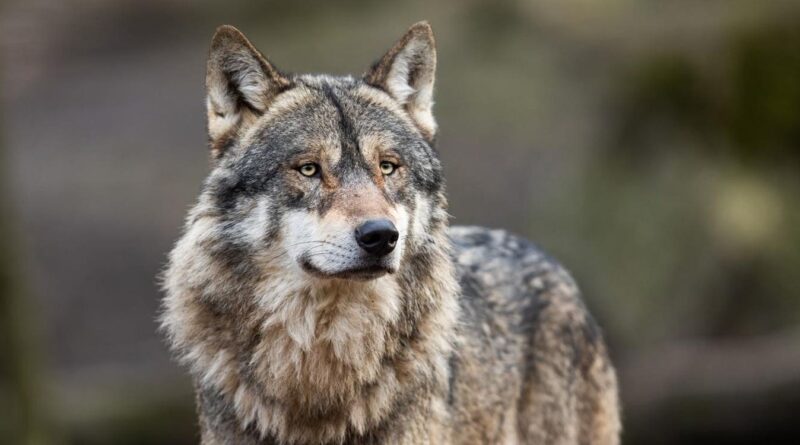What an 18,000-Year-Old Wolf Puppy Teaches Us About Ice Age Survival
“Dogor” translates to “friend” in the Yakut language. That’s what we called an old, well-preserved thing … [+]
The mystery of an 18,000-year-old dog found in Siberian permafrost has fascinated scientists since its discovery in 2018. Impressively preserved with fur, whiskers and even eyelashes intact, Dogor’s identity has been they surprised the researchers, who could not tell if it was a dog. or wolf until genomic sequencing in 2022 finally reveals the truth.
Dogor was named as such for two reasons. The first is that the word “dogor” means “friend” in the language of the place where it was found. The second is that the word is a play on the question that scientists asked—is this creature a dog or a wolf?
As it is, today, we know for sure that Dogor is the remains of the wolf. And rather than answering our questions about dog evolution, this discovery ends up asking more questions about the nature of adaptation itself—how wolves and dogs actually survive. the bleak Ice Age past?
Dogor died from the freezing temperatures of the Last Ice Age.
To understand this, we must first understand what the Ice Age is.
What is an Ice Age?
An Ice Age is a time when the Earth’s temperature drops for a long period of time, causing large amounts of ice to spread across the continents and polar regions. The world has gone through several Ice Ages, and the most recent is the “Last Ice Age,” known as the Quaternary glaciation.
Before the Ice Age, the Earth generally had a warm climate. Interglacial periods, warm periods between glaciations, can last tens of thousands of years. These periods allow the development and expansion of plants and animals.
During these warm periods, many different creatures evolved. For example, woolly mammoths, saber-toothed cats and giant sloths thrived in these warm climates. As temperatures dropped to move into the Last Ice Age, these animals that had evolved to thrive in warm climates, along with others, faced major challenges.
How Does Dogor Fit into the Story of The Last Ice Age?
Dogor’s story provides a unique insight into the survival strategies of Ice Age animals. A genetic sequencing study conducted in 2022 revealed that Dogor is a wolf, which was determined by analyzing DNA from his well-preserved body. The study was part of a broader effort that analyzed 72 ancient wolf genes to understand the evolution and domestication of dogs.
Dogor’s intimate preservation offers a rare glimpse into the life of Ice Age wolves. His presence helps scientists put together the environmental conditions and challenges that their species are facing at this time. It also raises questions about how wolves adapt to the cold, how they hunt and how their social habits may help them survive.
Understanding the Dogor’s place in the Last Ice Age adds depth to our knowledge of the period and highlights the amazing adaptations of wolves and early dogs. It shows that surviving such difficult times required patience, adaptability and, in the case of some wolves and almost all dogs, developing good relationships with people.
What We Know About the Evolution of Dogs from the Dogor Fossil
The story of how wolves became dogs is a fascinating story of adaptation and mutual help. Another theory is that wolves began to roam near human camps, and those that were less aggressive in society might have been tolerated by humans. Over time, these wolves began to live on human remains, gradually becoming gentle and losing their fear of humans.
Through generations of natural selection and perhaps even deliberate breeding by humans, these wolves developed traits that made them more suitable for coexistence with humans. They became the soft, playful and sophisticated features we now associate with domesticated dogs, such as floppy ears and friendly demeanor.
This symbiotic relationship benefited both species: humans found loyal companions and good hunting partners, while dogs found food, shelter and protection during the Ice Age.
Dogor fossils also shed light on this broader history of dog domestication.
Dogs were already known to have been bred from gray wolves during the Ice Age, at least 15,000 years ago. However, where and how this domestication occurred remains a complex matter. Researchers have found evidence that two separate groups of wolves contributed DNA to dogs. This suggests that wolves may have been domesticated several times or that domesticated dogs may have interbred with wild wolves.
The study revealed that early and modern dogs are genetically closer to ancient Asian wolves than to European ones, suggesting a domestication event somewhere in the east. The first dogs from northeastern Europe, Siberia and America seem to have a single, shared origin from this eastern source.
However, early dogs from the Middle East, Africa, and southern Europe show ancestry from another source related to Middle Eastern wolves, suggesting that multiple events are possible. domestic or large mating with domestic wolves.
Our Best Idea: How Wolves and Dogs Survived the Last Ice Age
The survival strategies of wolves and dogs during the Ice Age were very different but they worked in the same way.
Wolves survived by quickly adapting to changing conditions. They were able to move long distances to follow prey and avoid difficult situations. Their social structures, hunting tactics and physical fitness allowed them to thrive in bleak, cold environments.
On the other hand, dogs found a unique place by forming close relationships with humans. These friendships provided mutual benefits that were essential for survival. Humans found reliable and efficient hunting partners, while dogs found reliable sources of food, warmth and protection. This interaction may have made it easier for the first dogs to survive, helping them survive the Ice Age by adapting to social conditions and becoming man’s best friend.
#18000YearOld #Wolf #Puppy #Teaches #Ice #Age #Survival
